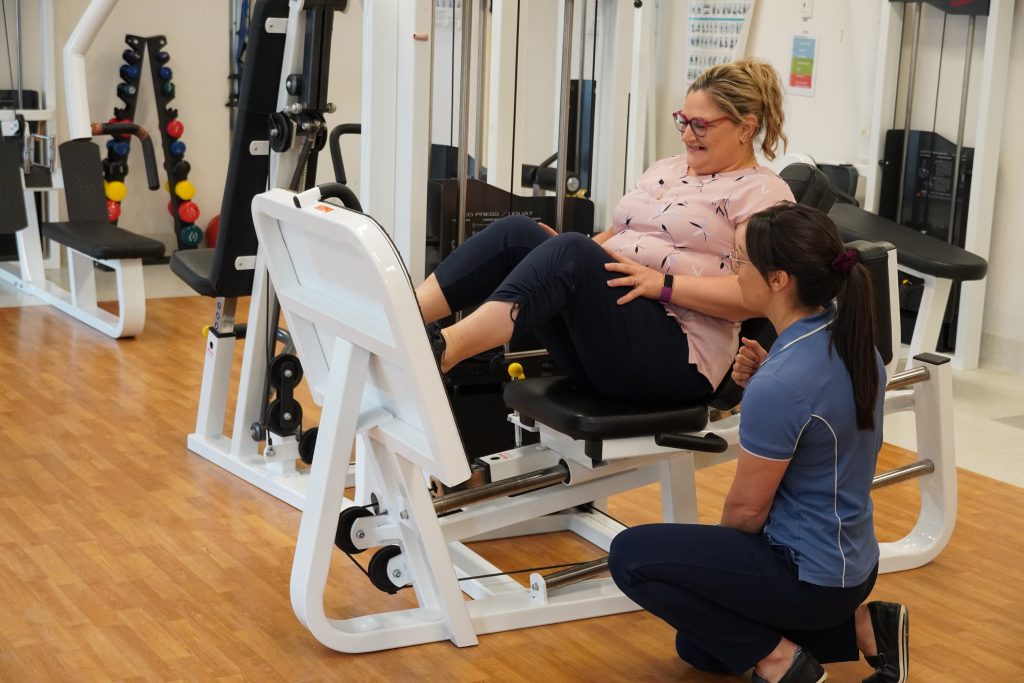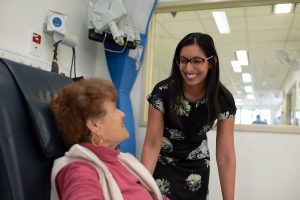Prehabilitation before major lower limb amputation significantly reduces acute hospital length of stay according to a recent study at The Queen Elizabeth Hospital.
The ‘prehabilitation-plus’ intervention combines reconditioning and strengthening exercises, education, and home modifications to prepare patients for surgery and facilitate a faster and safer return home.
Better preparation, better recovery
The study compared patients who completed one to four weeks of ‘prehabilitation-plus’ prior to surgery with patients who did not undergo prehabilitation but had similar surgery types, age, comorbidities and pre-operative levels of mobility and support. Both groups received usual rehabilitation care after surgery.
The prehabilitation-plus group were discharged from their acute hospital stay after an average of six days, compared to 17 in the control group.
“Patient feedback was that they felt more prepared, they knew what to expect, and perhaps most pertinently, they could go home sooner to their own environment where they were most comfortable and had their own supports,” said Shelley Fulton, Senior Project Manager in Neuroscience and Rehabilitation.
Discharging directly home from the acute care setting soon after surgery is a major goal for clinicians and can have benefits for patients. It reduces the risk of hospital acquired infections and can reduce psychological stress by allowing patients to return to their own surroundings. It also allows rehabilitation teams to work with patients in their own setting, meaning they can practise transferring on and off their own bed or toilet, for example.
“We were able to help patients be more prepared both physically and mentally for their pending lower limb amputations,” said Mr Fulton.
Contributing to the evidence base
Elective major lower limb amputation is most often undertaken for patients with diabetes‑related complications and/or peripheral vascular occlusive disease.
There is ample evidence supporting the practice of prehabilitation, the process of enhancing an individual’s functional capacity to enable them to withstand an upcoming stressor, such as surgery.
However, there had been a lack of research investigating the effect of prehabilitation for patients undergoing major lower limb amputation.
Having successfully prepared patients for major lower limb surgery with the prehabilitation-plus program, the research team decided to test its effectiveness with the retrospective study.
“We were keen to share the positive results we were seeing with our client group so that services within South Australia and Australia could set up similar programs within their own settings,” said Mr Fulton.
In addition to reducing acute hospital length of stay, the program also reduced total length of hospital stay; the combined length of stay in acute and rehabilitation settings. Therefore, it shifted the total package of care required from an inpatient rehabilitation setting to an outpatient setting, desirable from both patient and healthcare provider perspectives.
More about prehabilitation-plus
Prior to commencing the prehabilitation-plus program, patients were assessed by the day rehabilitation service multidisciplinary team, which comprised occupational therapy, physiotherapy, orthotics and prosthetics, rehabilitation medicine, nursing, exercise physiology, social work, allied health assistants, dietetics, and psychology staff members.
The multidisciplinary team then provided individualised, patient centred, and goal directed programs on a one-to-one basis for each patient.
Interventions to maximise physical function included endurance training and strengthening exercises, practising transfers (to and from the bed, for example) and, for some, wheelchair mobility practice.
Dieticians provided nutritional advice to optimise nutrition to facilitate overall health, strengthening, conditioning and wound healing.
To prepare patients for the pending physical and psychological changes expected following a major lower limb amputation the team also provided education which included:
- Psychological adjustments
- Anticipated immediate post-operative and longer-term pathways
- Post-operative and phantom pain
- Stump, wound and scar management
- Prosthetic information (including handling a prosthesis)
- Funding resources (e.g., national disability insurance scheme) available for ongoing equipment, care, and prosthetics.
Finally, the program included a home visit to assess patient needs following the amputation. This included home modifications and equipment, wheelchair accessibility (if necessary), as well as referrals to relevant peer support groups and advice regarding return to work, driving and other activities.



